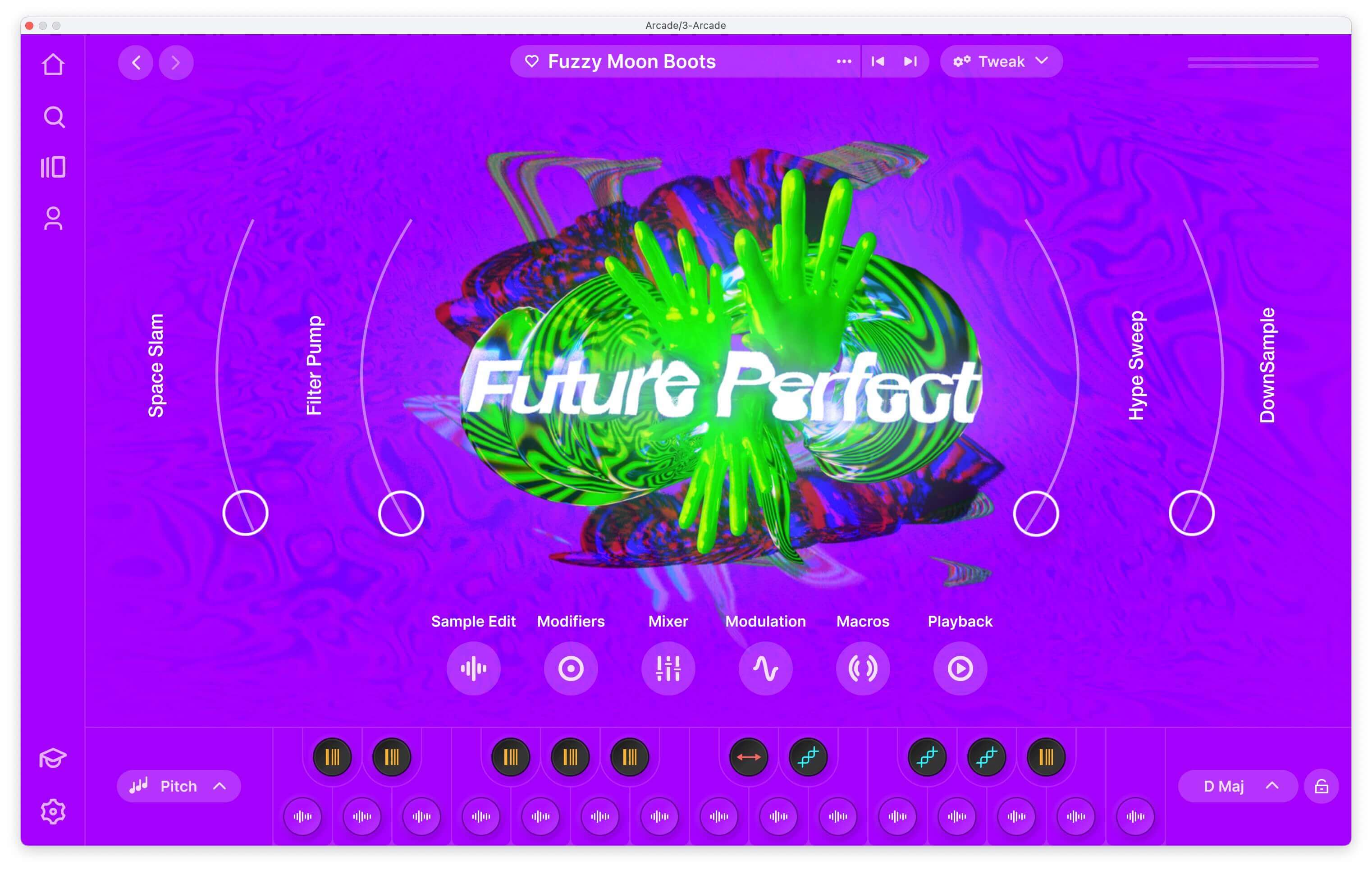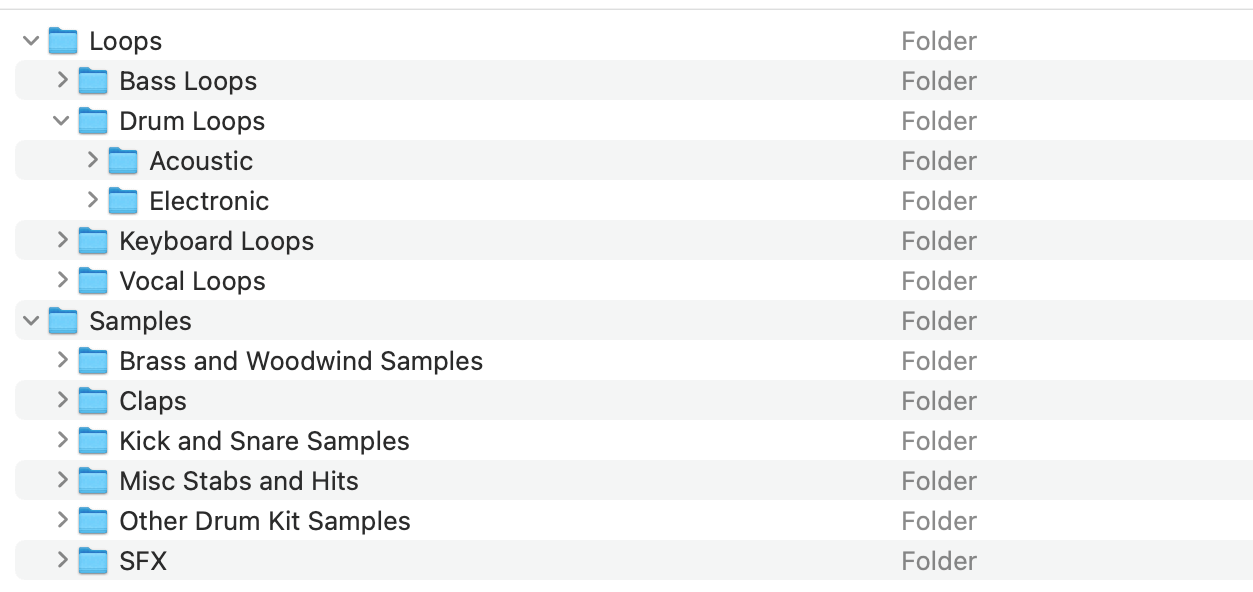If you watch the Puremix video "Jimmy Douglass Mixing Mr. Emotional ‘The Way I Feel Inside,’” you’ll see Jimmy replace some of the background vocal parts with samples, which he feels work even better than the parts from the client’s session.
“Finding and collecting samples and using the right ones that match is half the battle,” he says. “That’s part of the genius of a lot of the producers that we know. They know where to put the right stuff. It’s like cooking a meal. You’ve got to have red wine with a steak.”
If you work on pop, EDM, hip-hop, or any music that uses a lot of samples and loops, it’s best to have a curated and organized sample collection at your fingertips before you start a project. That way, when inspiration strikes, you’re ready to grab the sounds you need and don’t have to waste session time searching online.
Even with such a collection, there will surely be occasions when you do have to search for samples. So, you should also have online sources that you’re familiar with so you can quickly find any supplemental audio material that you end up needing.

The highlighted track contains the vocal samples Jimmy adds during the mix of “The Way I Feel Inside.”
In this article, we’ll look at how to find and manage your samples and loops so that you’re ready for any production scenario.
Where to Look
There are plenty of online sources available for finding samples and loops. Some are free, but the ones that provide the most for royalty-free choices are the paid services. Sites like Loopcloud, Landr and Splice offer a subscription-based model where you pay a certain amount per month (or per year) and get credits that you can use to buy samples and loops. Then there are sites like Loopmasters (which also owns Loopcloud) and ADSR that allow for à la carte purchases of samples, loops and collections.
Arcade from Output offers a different model. It’s subscription-based, but its samples and loops are available via a proprietary virtual instrument that allows you to search for and play sounds directly in your project.

One of Arcade’s many and varied samplers.
For drum and percussion samples, XO by XLN Audio is a beat-making plugin that features hundreds of samples displayed in its Space window. The window maps your samples by similarity in what looks like a star field. Clicking on any of the stars plays the corresponding sample. XO contains a collection of preset sounds and lets you load your own samples.

XO’s Space display lets you quickly explore similar-sounding samples.
You can also find samples and loops on free sites like Looperman and Freesound.org, which feature user-uploaded content. The most significant caveat is that free samples and loops are not always royalty-free, so you have to be sure you have the rights before using one in a commercial production.
Another source is your own audio recorded in the field, with a dedicated recorder or even your phone. For example, you could capture background ambiences for lo-fi tracks, record animal or machine sounds, or whatever you think might work in your production. You can also record your own instrument samples, such as crash cymbals, unusual ethnic instruments, etc.
Keep it Together
No matter the source, when you’re gathering samples for your collection, start by creating an organized file system for storing them. Have a separate folder or directory for your samples and your loops. Categorize it however you want, as long as it follows a system you understand. You want to be able to find what you’re looking for quickly.

Organizing your library into categories is extremely helpful.
The bigger your library gets, the more critical it will be to get a sample management application. These programs will scan your directories for your samples and loops and categorize them with tags so that you can search your entire collection easily.
For example, ADSR Sample Manager is a free application that’s quite robust. It’s integrated with ADSR’s loop offerings, but you can use it with your own samples exclusively if you want. It runs as a standalone program from which you can drag and drop samples and loops into your projects and as a VST/AU/AAX plug-in that you can trigger directly.

ADSR’s Sample Manager can be opened standalone or as a plug-in.
Waves Cosmos Sample Finder ($14.99) is an inexpensive but powerful standalone application. It makes organizing your collections and finding samples easy thanks to clickable tags, filtering by key and BPM, and plenty more. It also comes with a generous sample collection of its own. Its Cosmos View feature works similarly to the “star field” window in XO.

Waves Cosmos lets you catalog your sample collection and includes its own library of samples.
Another option, Sononym ($99), is a deeper but pricer alternative with powerful features such as combining and searching multiple libraries, Duplicate Detection, Similarity Search and more.

Sononym provides an extensive set of sample-finding features.
Sample Discovery
If you can, allocate some time specifically to look for samples. You’re best off doing it when you’re between projects and don’t have looming deadlines.
If you have an extensive collection of samples but aren’t all that familiar with them, spend some time going through your library, preferably using a sample management program. You may have acquired collections that you haven’t listened to entirely or whose contents you’ve forgotten.
Just listening to samples, dropping them in a sampler, and experimenting can spark song ideas and get your creativity flowing.